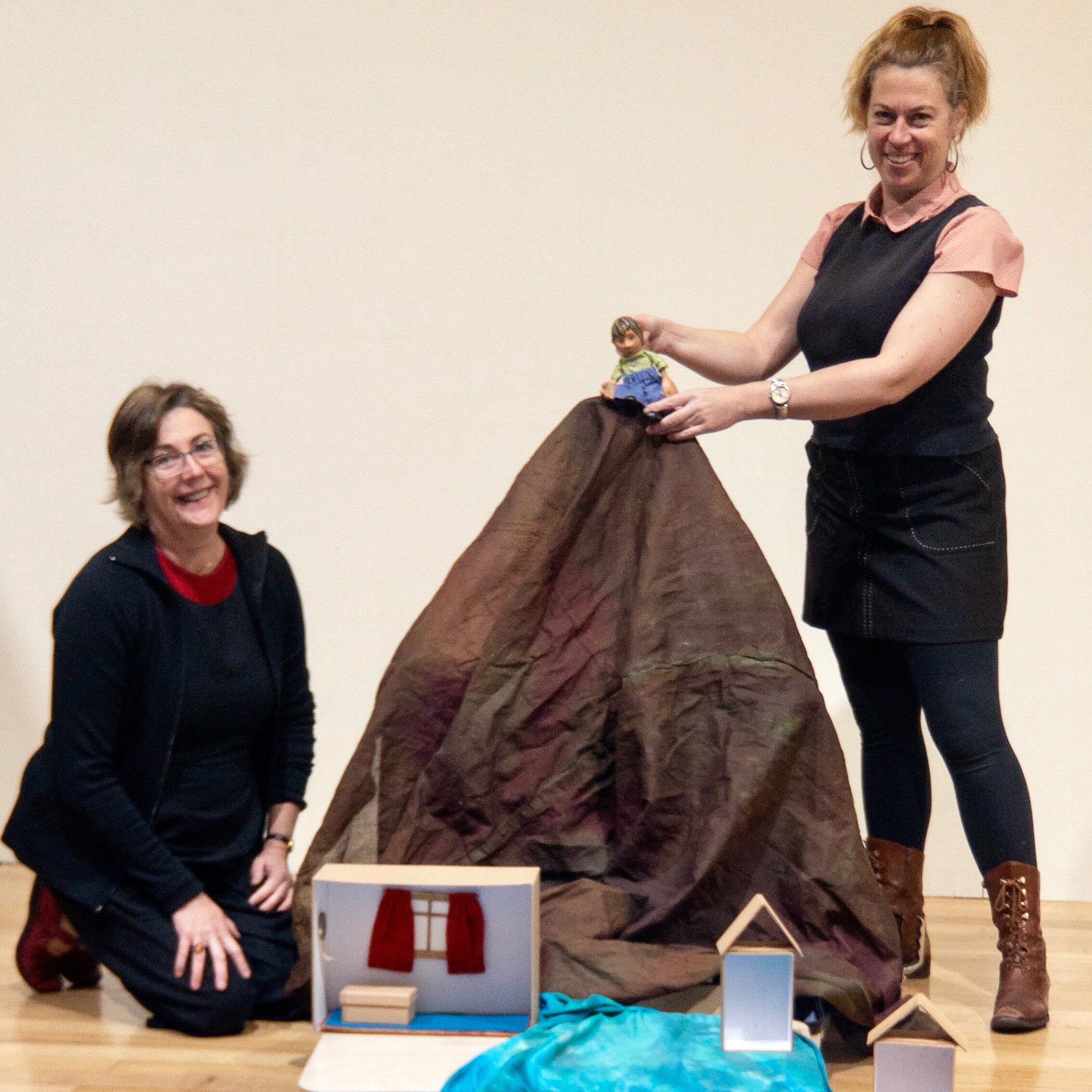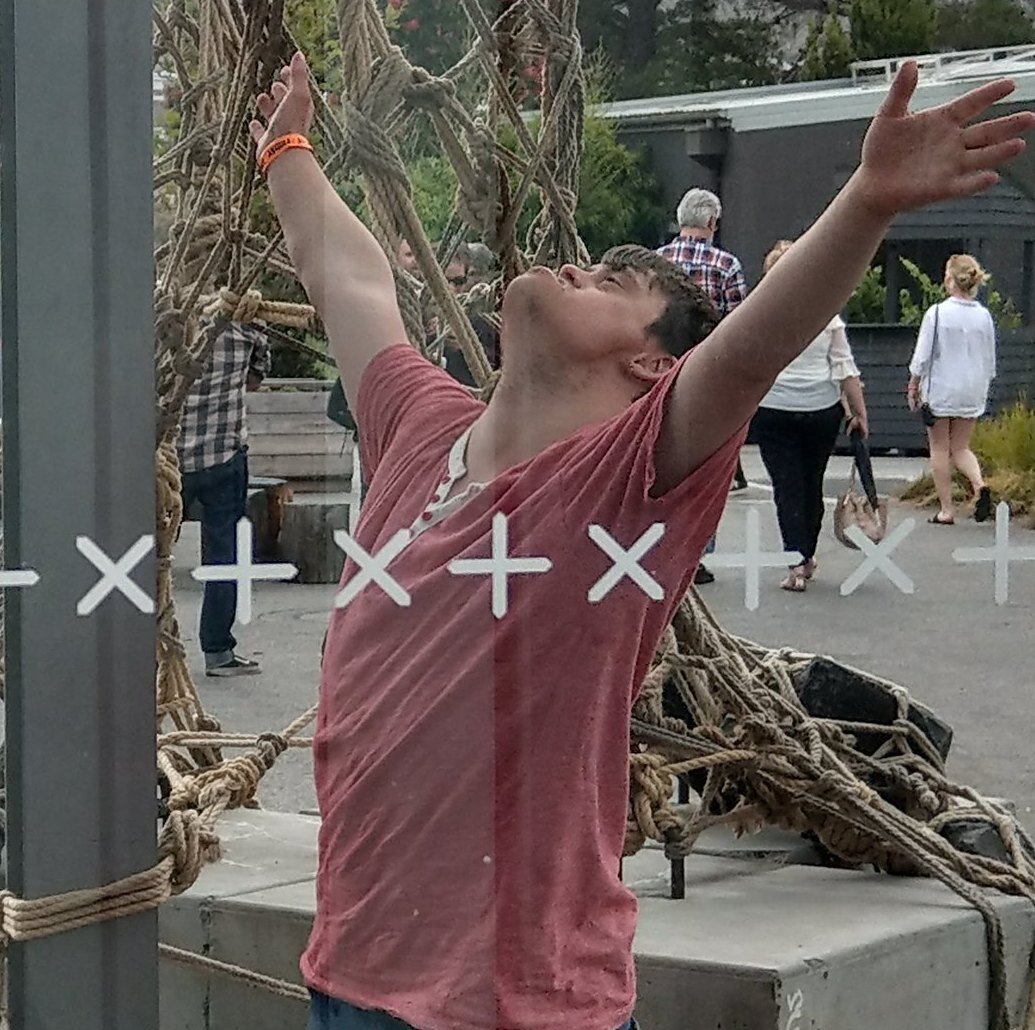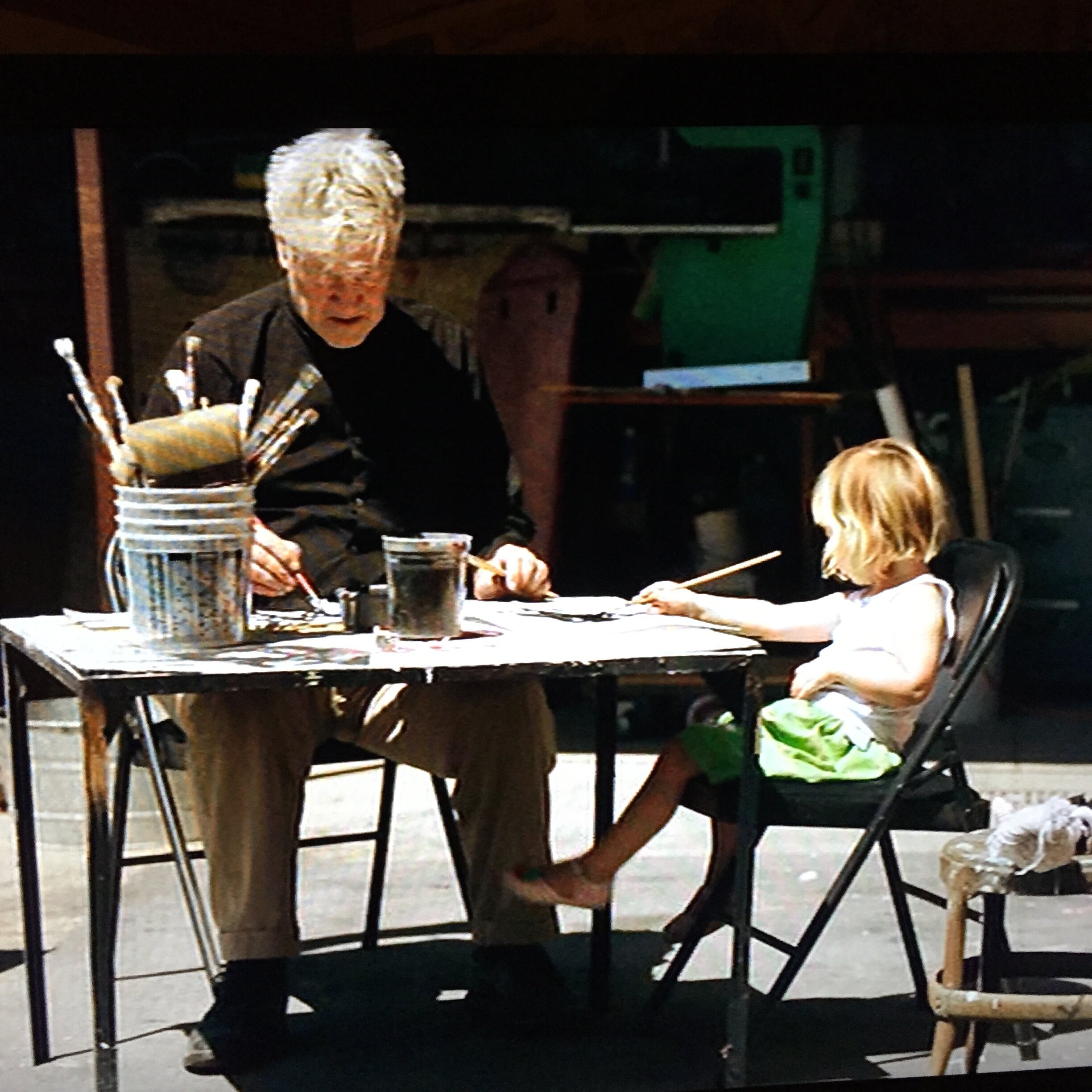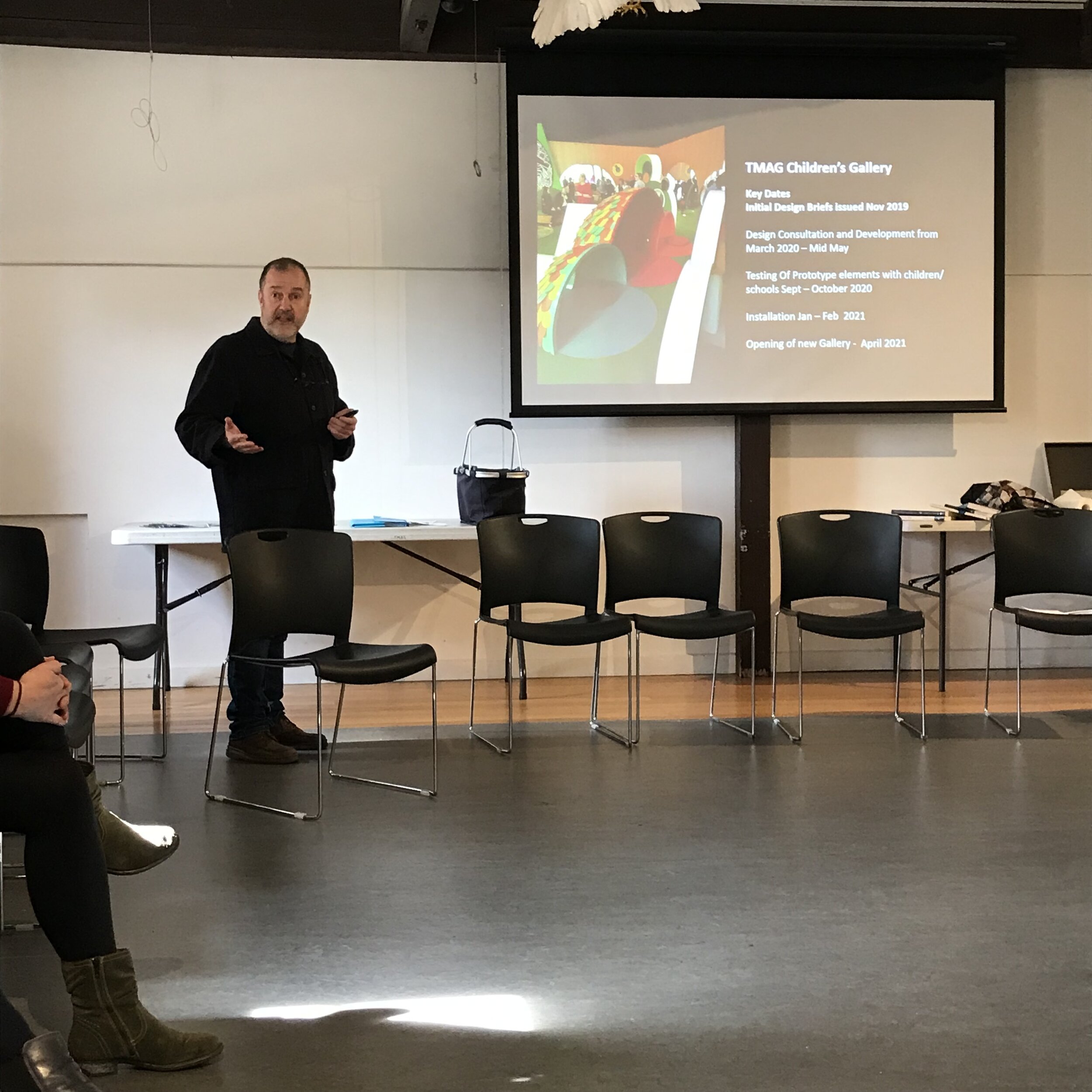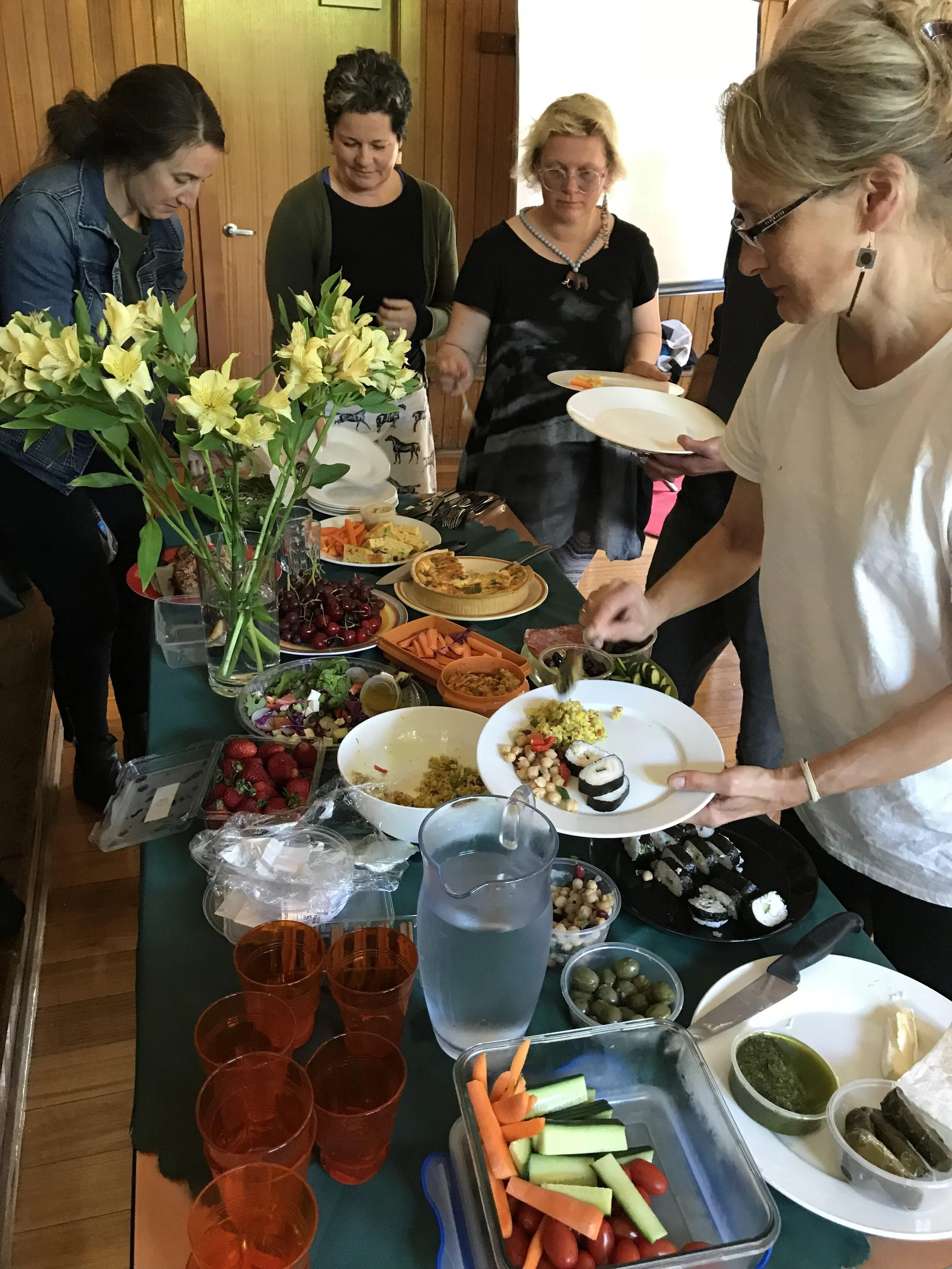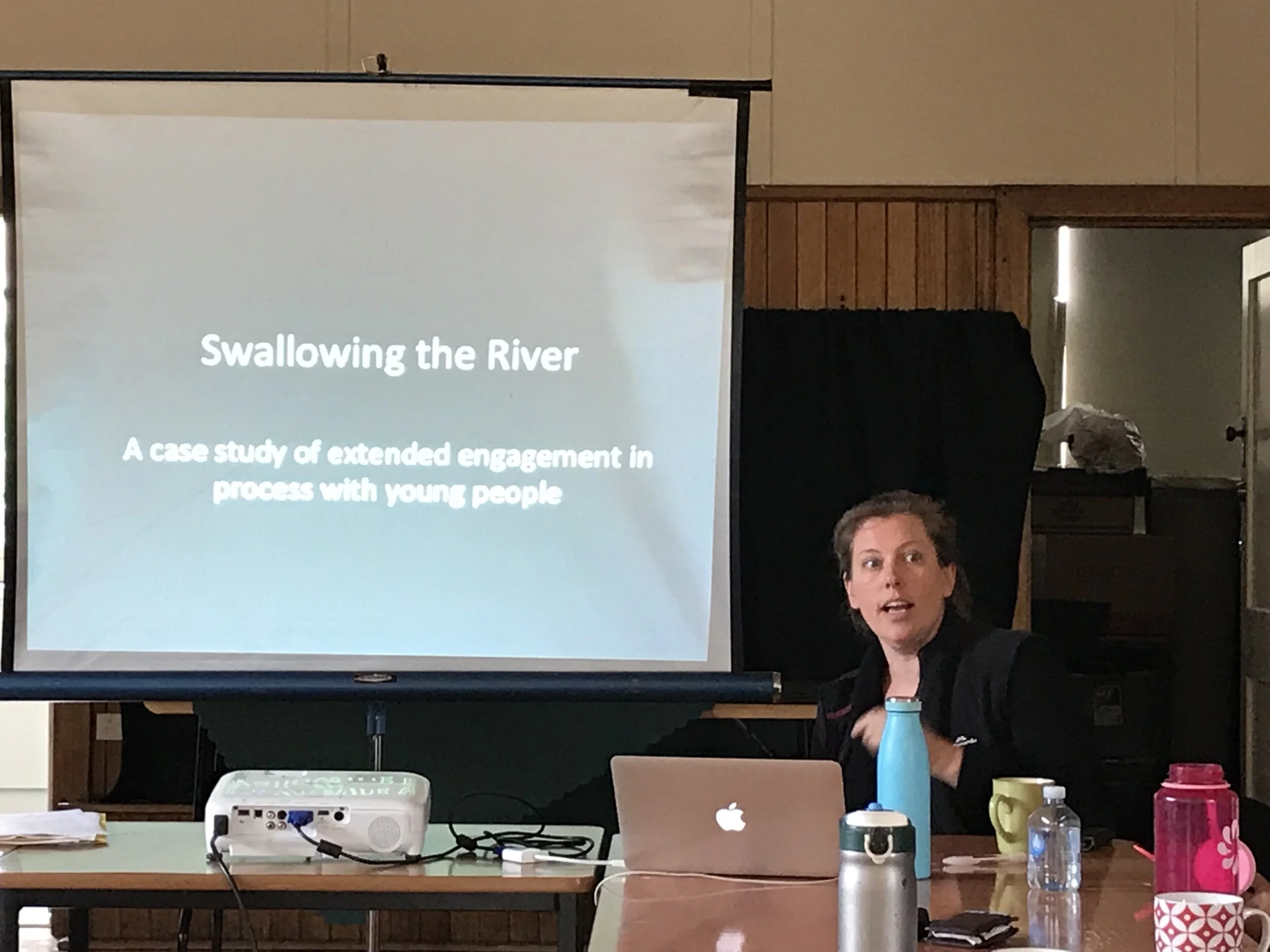Upcoming ArTELIER events:
ArTELIER events and resources
This calendar can be used to see what the upcoming ArTELIER events are but also to look back at ArTELIER programming since 2018.
LEARNING EXCHANGES;
Face -to-face LEARNING EXCHANGES need to be booked and offer a $250 stipend for artists to contribute. There are also travel allowances available (see FAQs). These usually run from 9.30am - 4.30pm. No face-to-face meetings are currently planned.
ZOOM LEARNING EXCHANGES last 3 hours. Please use the booking link to register - currently we are placing no restriction on numbers of ArTELIER artists.
SATELLITE Learning Exchanges are FREE to ArTELIER artists but no stipend is offered.
Once a LEARNING EXCHANGE has taken place we change that event to become a LEARNING EXCHANGE RESOURCE - inside you’ll find resources created on the day including ideas (where possible) together with a portfolio of images of the day.
SHIFTING AND STIRRING are created in partnership with Sydney Opera House, ArtPlay, Art Gallery of WA and maybe-together, These do not pay a stipend for artists.
MULTI SESSION PROJECT shows public creative encounters from the specific ArTELIER projects - you can book for these on this site.
SEARCH events…
Previous ArTELIER events:
Or you can browse by this INDEX…
-
HUB
- Feb 12, 2020 HUB: ArTELIER planning team Feb 12, 2020
- Mar 4, 2020 HUB: ArTELIER planning team Mar 4, 2020
- Apr 1, 2020 HUB: ArTELIER planning team Apr 1, 2020
- Apr 15, 2020 ZOOM HUB: ArTELIER planning team Apr 15, 2020
- May 6, 2020 HUB: ArTELIER planning team May 6, 2020
- Jun 3, 2020 HUB: ArTELIER planning team Jun 3, 2020
- Jun 10, 2020 HUB: ArTELIER planning team Jun 10, 2020
- Jul 1, 2020 HUB: ArTELIER planning team July 2020 Jul 1, 2020
- Aug 5, 2020 ZOOM HUB: ArTELIER planning team Aug 5, 2020
-
LEARNING EXCHANGE
- Jun 20, 2018 LEARNING EXCHANGE RESOURCE: What do we mean by participation and engagement? Jun 20, 2018
- Sep 25, 2018 LEARNING EXCHANGE RESOURCE: Building the value of the creative arts in education Sep 25, 2018
- Sep 26, 2018 LEARNING EXCHANGE RESOURCE: Learning on Country Sep 26, 2018
- Oct 31, 2018 LEARNING EXCHANGE RESOURCE: Valuing Youth Arts Oct 31, 2018
- Feb 6, 2019 LEARNING EXCHANGE RESOURCE: Signals, Technology, Children and Young People Feb 6, 2019
- Jun 26, 2019 LEARNING EXCHANGE: Collective Process 1 Jun 26, 2019
- Jun 28, 2019 LEARNING EXCHANGE: Collective Process 2 Jun 28, 2019
- Aug 28, 2019 LEARNING EXCHANGE RESOURCE: Decolonising Practice Aug 28, 2019
- Sep 26, 2019 LEARNING EXCHANGE RESOURCE: The Voice of the Child Sep 26, 2019
- Oct 29, 2019 LEARNING EXCHANGE RESOURCE: Reflecting Diversity Oct 29, 2019
- Dec 18, 2019 LEARNING EXCHANGE RESOURCE: Relationships and Partnerships Dec 18, 2019
- Feb 19, 2020 LEARNING EXCHANGE RESOURCE: The Expanded Classroom Feb 19, 2020
- Mar 10, 2020 LEARNING EXCHANGE RESOURCE: Capturing Process Mar 10, 2020
- Apr 8, 2020 ZOOM LEARNING EXCHANGE RESOURCE: Being and Belonging - connection to Country Apr 8, 2020
- Apr 16, 2020 ZOOM LEARNING EXCHANGE RESOURCE: Developing online creative encounters Apr 16, 2020
- Apr 30, 2020 ZOOM LEARNING EXCHANGE RESOURCE: Personal and Public - integrating a creative life Apr 30, 2020
- May 18, 2020 LEARNING EXCHANGE RESOURCE: Developing your creative practice to manage trauma, loss and uncertainty May 18, 2020
- Jun 9, 2020 ZOOM LEARNING EXCHANGE RESOURCE: PLACE AND (DIS)PLACE Jun 9, 2020
- Jul 9, 2020 ZOOM LEARNING EXCHANGE: Moving artists from being BEGGAR ELITES into co-creating richer lives with others Jul 9, 2020
- Aug 6, 2020 ZOOM LEARNING EXCHANGE: Art as Action Aug 6, 2020
- Sep 10, 2020 SATELLITE LEARNING EXCHANGE: Why does your Art Matter? with Tim Butcher Sep 10, 2020
-
NATIONAL LEARNINGEXCHANGE
- May 21, 2020 SATELLITE session: ArTELIER: Shifting & Stirring May 21, 2020
- Jun 2, 2020 SATELLITE session: Shifting & Stirring 2 - Responding slowly & trusting emergent process Jun 2, 2020
- Jun 19, 2020 SATELLITE session: Shifting & Stirring 3 Jun 19, 2020
- Jun 29, 2020 SATELLITE session: Shifting & Stirring 4 Jun 29, 2020
- Jul 29, 2020 SATELLITE session: Producing and programming for children and families with Alex Desebrock Jul 29, 2020
-
PROJECT
- Mar 7, 2019 – Mar 10, 2019 MULTI SESSION PROJECT: ArTELIER DEEP DIVE at Nayri Niara Mar 7, 2019 – Mar 10, 2019
- Apr 26, 2019 – Apr 29, 2019 MULTI SESSION PROJECT: ArtPlay Artists Exchange - part one Apr 26, 2019 – Apr 29, 2019
- May 11, 2019 MULTI SESSION PROJECT: B4 artist and teacher workshops May 11, 2019
- Aug 30, 2019 – Oct 30, 2019 MULTI SESSION PROJECT: Skills for Kids Cafes Aug 30, 2019 – Oct 30, 2019
- Feb 28, 2020 MULTI SESSION PROJECT: Skills 4 Kids Cafe Feb 28, 2020
- Apr 16, 2020 ZOOM LEARNING EXCHANGE RESOURCE: Developing online creative encounters Apr 16, 2020
- Jul 13, 2020 stART@home ➤ PUMP UP THE JAM DANCE with Robin Godfrey (Session 1/3) Jul 13, 2020
- Jul 15, 2020 stART@home ➤ Dance On Deck with Robin Godfrey Jul 15, 2020
- Jul 17, 2020 stART@home ➤ Dance On Deck online with Robin Godfrey Jul 17, 2020
- Jul 28, 2020 stART@home ➤ OYSTER SONGS with Sarah Jane Moore Jul 28, 2020
- Aug 27, 2020 stART@ Rosny College ➤ BLANK CANVAS with Mostafa Faraji Aug 27, 2020
- Oct 5, 2020 stART@ Salamanca Arts Centre ➤ WHO LIVES IN YOU with Luke Campbell Oct 5, 2020
- Oct 5, 2020 stART@ Salamanca Arts Centre ➤ RECIPE FOR A STORY with Bella Young & Emma Skalicky Oct 5, 2020
- Oct 6, 2020 stART@ Salamanca Arts Centre ➤ LISTENING TIME with Catherine Morse Oct 6, 2020
- Oct 12, 2020 stART@ Salamanca Arts Centre ➤ SMALL STORIES with Leigh Tesch & Kirsty Grierson Oct 12, 2020
- Oct 13, 2020 stART@ Salamanca Arts Centre ➤ LISTENING TIME with Catherine Morse Oct 13, 2020
-
RESOURCE
- Jun 20, 2018 LEARNING EXCHANGE RESOURCE: What do we mean by participation and engagement? Jun 20, 2018
- Jul 25, 2018 LEARNING EXCHANGE RESOURCE: Giving Voice to Young People Jul 25, 2018
- Sep 25, 2018 LEARNING EXCHANGE RESOURCE: Building the value of the creative arts in education Sep 25, 2018
- Sep 26, 2018 LEARNING EXCHANGE RESOURCE: Learning on Country Sep 26, 2018
- Oct 31, 2018 LEARNING EXCHANGE RESOURCE: Valuing Youth Arts Oct 31, 2018
- Nov 28, 2018 LEARNING EXCHANGE RESOURCE: Authentic Engagement Nov 28, 2018
- Feb 6, 2019 LEARNING EXCHANGE RESOURCE: Signals, Technology, Children and Young People Feb 6, 2019
- Jul 24, 2019 LEARNING EXCHANGE RESOURCE: Pedagogy, Planning and Practice Jul 24, 2019
- Sep 26, 2019 LEARNING EXCHANGE RESOURCE: The Voice of the Child Sep 26, 2019
- Oct 29, 2019 LEARNING EXCHANGE RESOURCE: Reflecting Diversity Oct 29, 2019
- Mar 10, 2020 LEARNING EXCHANGE RESOURCE: Capturing Process Mar 10, 2020
- May 18, 2020 LEARNING EXCHANGE RESOURCE: Developing your creative practice to manage trauma, loss and uncertainty May 18, 2020
- Jun 9, 2020 ZOOM LEARNING EXCHANGE RESOURCE: PLACE AND (DIS)PLACE Jun 9, 2020
-
SATELLITE
- May 9, 2018 SATELLITE: What is a Teaching Artist May 9, 2018
- Apr 13, 2019 SATELLITE: Debby Marziaz on Grant writing for Arts Projects Apr 13, 2019
- Jul 5, 2019 – Nov 15, 2019 SATELLITE: Reading Room Jul 5, 2019 – Nov 15, 2019
- Feb 12, 2020 SATELLITE: SLACK online surgery Feb 12, 2020
- Apr 15, 2020 MULTI SESSION PROJECT: ArTELIER book briefing - Q and A Apr 15, 2020
- Aug 20, 2020 ZOOM SATELLITE session: Building resilience with Sunita Bala Aug 20, 2020
-
stART online
- Jul 13, 2020 stART@home ➤ PUMP UP THE JAM DANCE with Robin Godfrey (Session 1/3) Jul 13, 2020
- Jul 15, 2020 stART@home ➤ Dance On Deck with Robin Godfrey Jul 15, 2020
- Jul 17, 2020 stART@home ➤ Dance On Deck online with Robin Godfrey Jul 17, 2020
- Jul 28, 2020 stART@home ➤ OYSTER SONGS with Sarah Jane Moore Jul 28, 2020
- Aug 27, 2020 stART@ Rosny College ➤ BLANK CANVAS with Mostafa Faraji Aug 27, 2020
- Oct 5, 2020 stART@ Salamanca Arts Centre ➤ WHO LIVES IN YOU with Luke Campbell Oct 5, 2020
- Oct 5, 2020 stART@ Salamanca Arts Centre ➤ RECIPE FOR A STORY with Bella Young & Emma Skalicky Oct 5, 2020
- Oct 6, 2020 stART@ Salamanca Arts Centre ➤ LISTENING TIME with Catherine Morse Oct 6, 2020
- Oct 12, 2020 stART@ Salamanca Arts Centre ➤ SMALL STORIES with Leigh Tesch & Kirsty Grierson Oct 12, 2020
- Oct 13, 2020 stART@ Salamanca Arts Centre ➤ LISTENING TIME with Catherine Morse Oct 13, 2020

ZOOM LEARNING EXCHANGE RESOURCE: PLACE AND (DIS)PLACE
What is the role of artists in communities - how can they contribute to their own and their communities’ a sense of place.

LEARNING EXCHANGE RESOURCE: Developing your creative practice to manage trauma, loss and uncertainty
This session brings practitioners and experts to ask how creative practice can support managing loss and uncertainty.
SPECIAL GUEST PROVOCATEUR - Esther Dreifuss-Kattan
“When dealing with major loss and mourning, if there is no integration through artistic expression, no idealisation of the self can take place, and instead one suffers the ‘depletion of the self by the shadow of the loss of the Other’ (Kristeva, 1989. p. 5). Giving a form through visualisation or verbalisation, however can stabilise the self and thus reestablish the narcissistic balance that had been overwhelmed by the archaic affects of trauma, illness or loss, thus initiating both an internal and external dialogue. Aesthetic expressive abilities allow the artist not only to connect to the Other, the viewer, but to reconstruct and recollect in a visual form his or her inner experiences as well.”
(Dreifuss-Kattan-Kattan, 2016. p. 2)
Esther Dreifuss-Kattan will join us from California to talk about her book, Art and Mourning. Esther will speak about how artists have used their creativity to face and work through traumatic and painful experiences of loss. As a psychoanalyst, art therapist, and artist Estare has analysed the work of major modernist and contemporary artists and thinkers through a psychoanalytic lens.
The structure of the morning is a bit different today due to availability of presenters…
10.00 - Acknowledgement of country & welcome, intro for the day’s run through
10.10 - Sharing practice - ceremony with Sinsa Mansell and revisitings with Simon Spain
10.50 Break off rooms
11.00 Provocation from guest - Esther Dreifuss-Kattan -
12.00 break
12.15 Break into chat rooms for discussions about provocations
12.45 wrap and ArTELIER business - next session etc…
Dr. Esther Dreifuss-Kattan is a psychoanalyst, psychotherapist and art therapist in private practice in Beverly Hills, California. Dr. Esther Dreifuss-Kattan was President of the New Center for Psychoanalysis in Los Angeles from 2016-2018. She works with adults of all ages, adolescents and children. Given Dr. Dreifuss-Kattan’s own artistic background, she specializes in helping clients who are involved in various creative pursuits and/or who work in the entertainment industry and the art world: film, television, music, visual arts, fashion, talent agents, academics, and those in public relations.
Dr. Dreifuss-Kattan’s second specialty is working with adult and pediatric cancer patients/survivors and their families as well as those with chronic pain. In addition to her private practice, she also works extensively with Los Angeles-based organizations devoted to treating those with illness. She is part of the team at Chai Lifeline West Coast, a non-profit organization that helps families who have a child with cancer. She is clinical consultant to the Pediatric Pain and Comfort Care Program at UCLA and Whole Child LA and a Group Facilitator/Clinical Specialist at the Hematology/Oncology Department at the David Geffen School of Medicine where she leads the “The Healing Arts Group” for the Simms/Mann UCLA Center for Integrative Oncology.
Dr. Dreifuss-Kattan also works with mature adults as they embark on retirement, set new personal and professional goals, and find continuedcreative inspiration. Dreifuss-Kattan also leads an Art Healing and Empowerment Workshop for women who are immigrants from Mexico through the Mar Vista Family Center in Los Angeles.
Dr. Dreifuss-Kattan is currently a senior faculty member at the New Center for Psychoanalysis. She has taught at UCLA Extension in the Health Sciences and Visual Arts departments, at Tel-Aviv University in Israel in the Clinical Psychology Graduate School, and at the Extension Program of Zurich University in Switzerland. Her published books and articles center on clinical practice and theory in psychoanalysis on Art Therapyand Psychooncology. She lectures nationally and internationally.
She received her PhD in Psychoanalysis from the Southern California Institute of Psychoanalysis, now the New Center for Psychoanalysis in Los Angeles, and earned another PhD in Art Therapy and Psychooncology from the Union Institute and University in Cincinnati, Ohio.
She is registered with the California Medical Board as a Research Psychoanalyst. RP-58, and credentialed as an ATCB art therapist with the American Art Therapy Credentials Board.
She is a member of the American Psychoanalytic and the International Psychoanalytic Association, the American Psychological Association and the American Art Therapy Association.
Dr. Esther Dreifuss-Kattan speaks fluent English and German, as well as conversational French and Hebrew.
EXTRAS:
You might want to listen to this CAT podcast before the session..
In this episode of What are you looking at? we talk to Reserved for Healing artist Michelle Maynard and Head of Indigenous Engagement and Strategy at MAAS, Marcus Hughes about cultural and artistic practice and the non-linear path of healing.
Reserved for Healing was an exhibition at Contemporary Art Tasmania exploring intergenerational knowledge and cultural exchange in Lutruwita/Tasmania, featuring Mae Ganambarr, Jack Langford, Kaninna Langford, Ruth Langford, Josie Mason, Warren Mason and Michelle Maynard.
The Reserved for Healing program focused on expanding the ambition of cultural production for Tasmanian Aboriginal artists and was developed through CAT and walantanalinany palingina (WaPa) working with support from the Australia Council’s Chosen initiative. WaPa and CAT partner on building capacity for delivering the First Nations festival, WaPa 22Ten22.
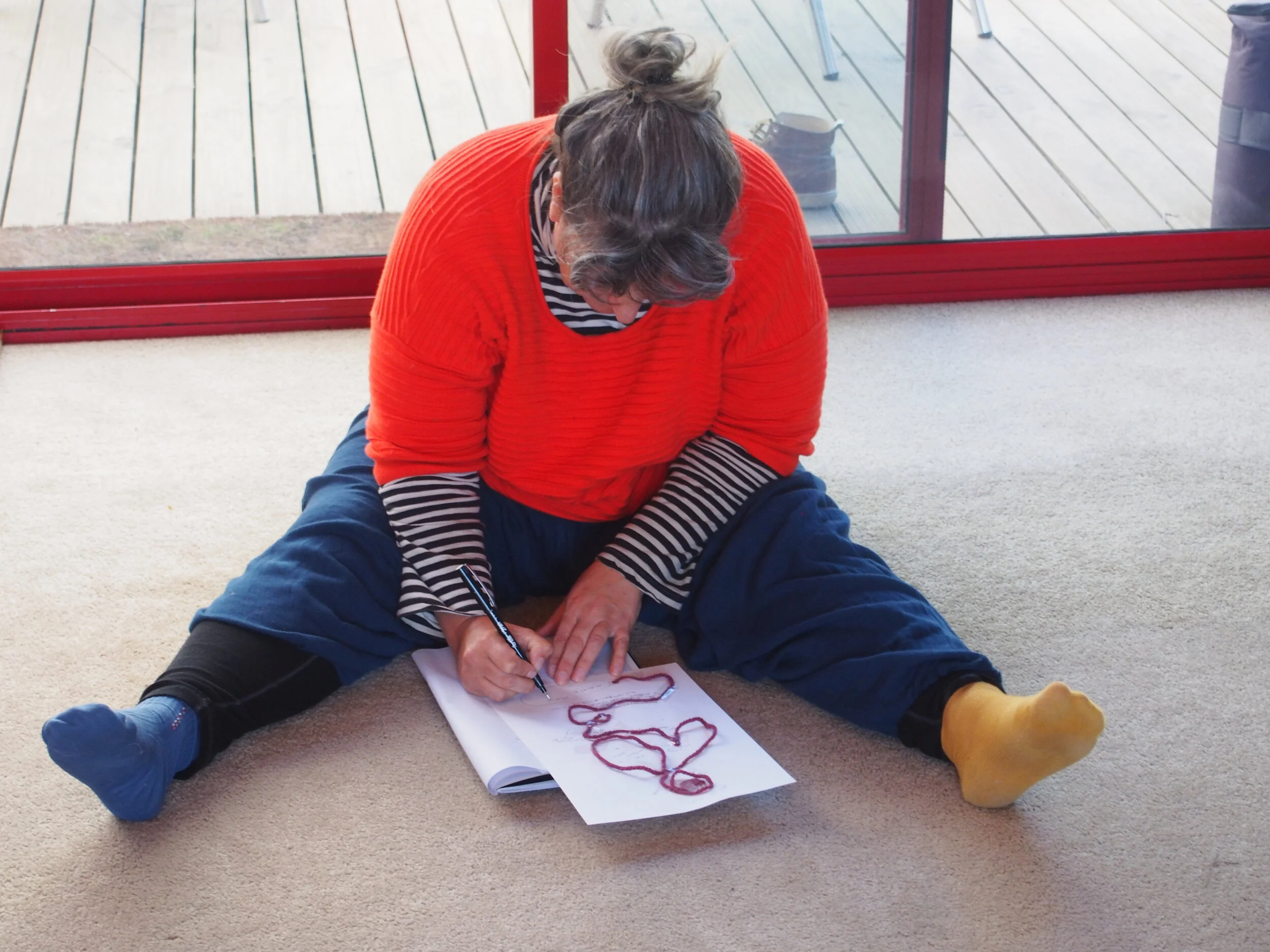
LEARNING EXCHANGE RESOURCE: Capturing Process
In this session we shall look at means of documentation and evaluation…

LEARNING EXCHANGE RESOURCE: Reflecting Diversity
Lucien Simon, Alysha Herrman, Koko Flow
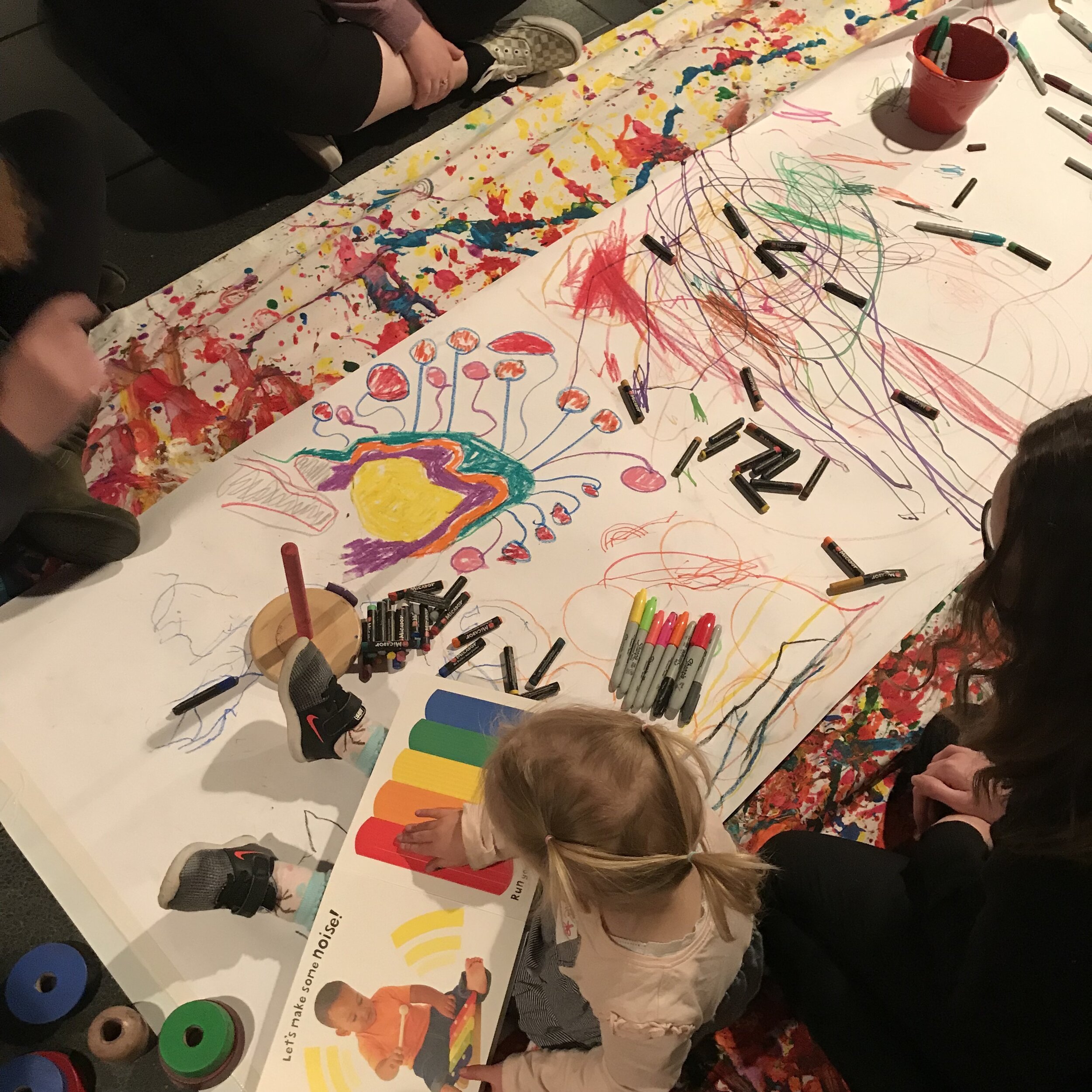
LEARNING EXCHANGE RESOURCE: The Voice of the Child
Victoria Ryle, Barbara Piscitelli , Leigh Tesch and Simon Spain
9.30am
Intro
A few words from TMAG about their work with children.
General ArTELIER housekeeping
What, why How…why are we here today?
10 – 10.45am
The Five A's: Authorship, Autonomy, Attachment, Authenticity, and Aesthetics
Using micropublishing as a tool, we will undertake a short creative learning exchange to prompt discussion around the space in our respective practices for children's agency and voice.
Using Kucirkova's (2017) 5 As of personalisation to guide the activity of children's agentic story making as a reflexive tool: to what extent are the stories based on the children’s own content? (Authorship)/ to what extent was the creation of the final product child’s independent work? (Autonomy)/ who owns the final product? (Attachment)/ to what extent do children’s stories capture content that is genuine and responsive to the child’s own situation? (Authenticity)/ to what extent does the final product reflects the child’s own taste and preference? (Aesthetics)
Victoria Ryle
BREAK
11am
Hands-on session in the B4 Making Marks exhibition - The B4 Early Years Coalition (B4) and partners invite all children aged birth to 4 years to make marks and submit their work for the Making Marks, children’s art exhibition (2019).
Making Marks aims to celebrate, nurture and support the voice of the child through art and is being held in conjunction with the Early Childhood Australia (ECA) Conference in Hobart. Approximately 60 individual works have been selected by a curatorial team led by Dr Barbara Piscitelli AM and including Simon Spain and Bec Stevens. Works selected are representative of the depth, diversity and range of art from across Tasmania geographically and within children from birth to 4 years.
In this session there will be a workshop to observe/take part in in the gallery space at TMAG (adults with young children attending)
Bec, Sheree and Simon with Barbara Piscitelli
12.15
LUNCH - BRING SOMETHING TO SHARE – all food must be in the space at the beginning of the day – sorry no coffees can be taken in…
1PM
Barbara Piscitelli (AM) – Creating, Collecting and Curating Children’s Art
In 1986, Barbara established an archive of children’s art and has created several exhibitions and catalogues from her collection. She donated the collection to the State Library of Queensland in 2004. The collection contains drawings and paintings by young children from China, Vietnam and Australia from the 1980s to present time. Barbara was former Chair of the Queensland Cultural Policy Advisory Committee, and served on the Council of the National Museum of Australia, and as a Board Member of the Queensland Museum and the Collections Council of Australia. Barbara’s research explores cultural policy and childhood, learning in museums, and early childhood visual arts education. She publishes in education and museum professional journals and consults in Australia, Singapore, Vietnam and China. She taught at Queensland University of Technology for 20 years and was Visiting Scholar at the Hong Kong Institute of Education. Barbara was recognised in the Australia Day 2006 Honours as a Member of the Order of Australia (AM). The citation for her Award reads: ‘For service to early childhood education as a teacher, to the establishment of programs in cultural institutions for children, and as a collector and curator of children’s art.
Barbara in action…
Barbara will offer a presentation followed by discussion set around a long table discussion.
Listen to this before you come to find out more about Barbara’s work https://www.abc.net.au/radionational/programs/the-art-show/why-childrens-art-matters/10499694
Simon to introduce
Barbara to lead
Short break
3pm
How are we going? – responses to the ArTELIER program. With an application about to go in about this program we want to capture your thoughts on how this program has the capacity to change your practice?
4pm
End
4.30PM
We have to be clear of the building by 4.15

LEARNING EXCHANGE RESOURCE: Pedagogy, Planning and Practice
This session dealt with planning within and outside of curriculum.

LEARNING EXCHANGE RESOURCE: Signals, Technology, Children and Young People
ArTELIER: February 6th 2019 at The South Hobart Living Arts Centre led by Richie, Julia and Selina.
This session was titled Signals, Technology, Children and Young People, Grabbling with the challenges of accessible technology for children and young people. Examples of innovative arts practice with technology, communication and transmission.
This session started with a hands-on activity making contact microphones with Richie – DIY technology.
Provocateur: Dylan Martorell joined us from Melbourne via zoom.
Dylan outlined the development of his practice from early gallery-based works repurposing hard rubbish in to sculptural sound devices, to working collaboratively in the public space with community. Core to his practice is his background as musician, the desire to bring the energy of a gig to the art process, and his interest in found materials. Dylan referred to his collaborations as ‘cannibalised technology’ using existing technologies and materials in situations where the public often become the creators of the work. The works embody a fluid and dynamic approach where mistakes are turned into opportunities and result in works like speakers that mix spices to create a cocktail of scents using the reverb of the speakers, and drum kits activated by archery sets. After earing him speak it makes sense that Dylan’s works are public and collaborative works, Dylan points out galleries often have too many rules to allow the open approach he favours. He gave examples over many years of works done in Asia, particularly Indonesia and spoke of the ease of generating collective experiences there, noting observations in the cultural differences towards ideas of collaboration. Dylan spoke of his approach to working with kids as a kind of ‘survivalist camp’ where DIY rules. You can see solutions made structurally visible with such things as pulleys and triggers, wheels and sounds, like an anarchist adventure playground.
Julia making circuits…
Sharing Practice
Julia showed us examples of how our bodies conduct sounds and electricity, embedding a sense of curiosity, wonder and fun in all her demos. She had us hearing incredible vibrations using only fishing wire and coat hangers and showed us a 60’s device for healing through electricity. This was followed by a true collaborative lunch, tossing a salad collectively using an artfully designed bedspread ‘the egg-spread’ with a stitched in yellow yolk.
Tossing the salad
Selina demonstrated her wondrous bike powered generator that had us peddling to watch a film and shared with us the ways she runs workshops to increase awareness and appreciation of resources and our impacts.
She then led a discussion around the ethics of the use of technology reading a section of the Critical Engineering Manifesto. Point 10 for example is: ‘The critical engineer recognises that each work of engineering engineers its user proportional to that users’ dependency on it’. She shared with us the work environmental engineer Tega Brain as an example of an artist working to create systems that embed the ethics of duty of care. http://tegabrain.com/
At the start of the day Selina set us off on a digital detox, placing our phones in box for the day and leaving us with the challenge: ‘Choose a day of the week and for an entire month engage in cyber-dieting during that day, which means don’t use any technology/communications’ devices in your home’.
We finished with a jam using the bike power to create sound with our newly made contact microphones, the perfect end to the year.
The team also did a visual evaluation of the program to date.
What was the question?
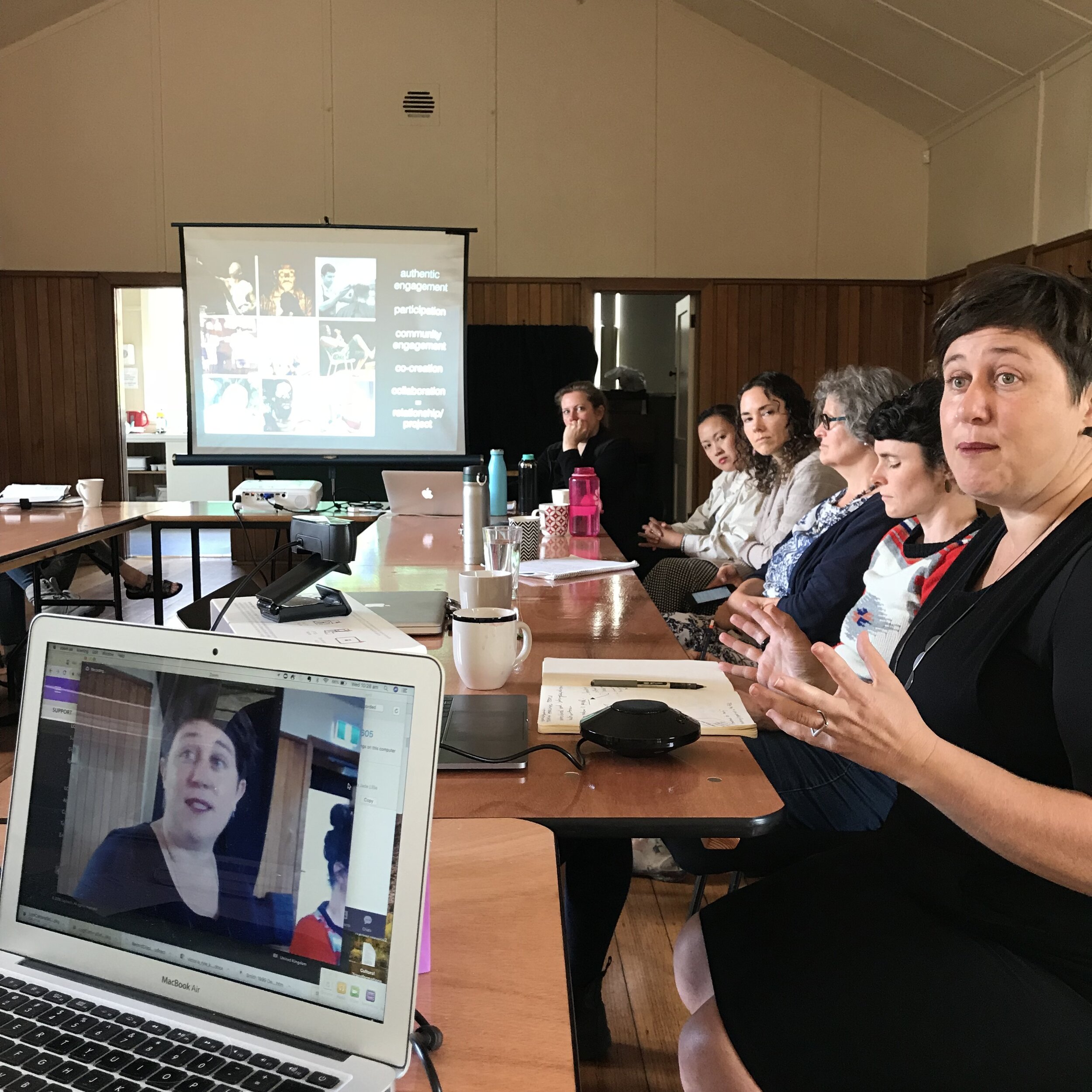
LEARNING EXCHANGE RESOURCE: Authentic Engagement
ArTELIER: 28th November at The South Hobart Living Arts Centre led by Julie Waddington
This session was titled Authentic engagement: The art and dance of facilitating authentic co-creation with children and nurturing meaningful long-term outcomes.
Our Questions for the day:
· What is the dance between holding and controlling?
· How do we facilitate authentic co-creation with young children and parents while being aware of issues of power?
· What type of engagement models best promotes and nurtures meaningful long-term outcomes?
· Exploring the value and importance of Art as a process over Art as an outcome specifically aimed at early childhood
Jade Lily - the Relationship is the Project
Provocateur : Jade Lillie
Jade Lillie has been working in arts, culture, community engagement, education, training and international development for the last 15 years. She is a specialist in community engaged practice, facilitation, collaboration and strategy.
Jade spoke of the dilution of the term ‘engagement’ outlining the dangers of art speak driven by industry demands. She warned that without building authentic relationships a project can be a ‘transaction’ and shared her wisdom that “ The relationship is the project”.
She spoke of socially engaged practice as a slippery subject with many names, despite this best practice can be distilled to:
· Intergenerational and cross-cultural
· Socially, culturally and politicly engaged and relevant
· Impactful in terms of social and personal change
· Responsive and collaborative
· Reflective of the artists and communities who are collaborating on the project
· Building community (practice/place/issue)
Jade shared broad range of experience and focused examples from Thailand and from the Footscray Arts Centre (FAC) where she was CEO for a number of years. She described FAC as a leading community organisation with a grass roots focus and activist agenda at enabling social change. In describing the successes at Footscray Arts Centre she spoke of it being a generative force of people and place with one its key strengths being the re-writing of the centres constitution to put First Nations First. The change in the constitution allowed the organisation to be led by an indigenous cultural program fostered by the Elder in residence, Uncle Larry. She also spoke of the success of the ‘West Writers’ program and ‘Collaborative Asia’ questioning ‘how do we decolonise collaboration? Sharing that collaboration as a term with colonialist overtones that often is approached as a demand rather than a question.
Jade pitched that instead of the term ‘Authentic Engagement” what if we focus on:
· First Nations First
· Ethics: self-determination and authorship, who is telling the story? And is it theirs?
· Relaxing the terminology: Everyone can be all things. ie. Audience, director and participant
· Creatively and culturally safe spaces
· Building real relationships – “the relationship is the project”
· Who is not here? Who is community?
· Making projects fluid and flexible.
Show challenged that for success at funding authentic encounters perhaps we need to change funding requirements, changing the language of applications, having language that is developed by artists.
Jade left us with an exercise: to remember an experience of engagement in our practice and what made it possible and to share this in groups of 3.
A shared lunch is a vital part of the ArTELIER LEARNING EXCHANGE
Sharing practice:
Julie Waddington, spoke on her work on the piece Swallowing The River - a devised performance with teenagers at St Martins Youth Art Centre in Melbourne. She spoke about the process of co-creation with young performers.
Bec Stevens on STOP, REST, PLAY
Bec Stevens spoke on her project STOP. REST, PLAY. A three week shopfront project in Hobart’s city that used diverse strategies to unpack issues and questions and to develop strategies to address the lack of children present in the city space of Hobart, as identified by the visiting urban planner, Jahn Gehl (and felt by many of its residents).
Leigh Tesch and Kirsty Grierson spoke on their Small Stories Project that ‘supports small people to build big connections by providing storytelling and creative play experiences for young children (0-5 years) and their parents and caregivers’. Leigh and Kirsty led us in physical warm up activities Zip and Zap and character development through and object we had on hand.
The final activity for the day was a think tank that saw the group slipt in two to discuss: 1. What could an extended program of emerging artist (performing) training look like in Tasmania? What would it need? What could it deliver/offer the ecosystem/sector? 2. Wellbeing and Artists, what systems/collaborations/structures could be put in place to support wellbeing in the creatives involved in ArTELIER.
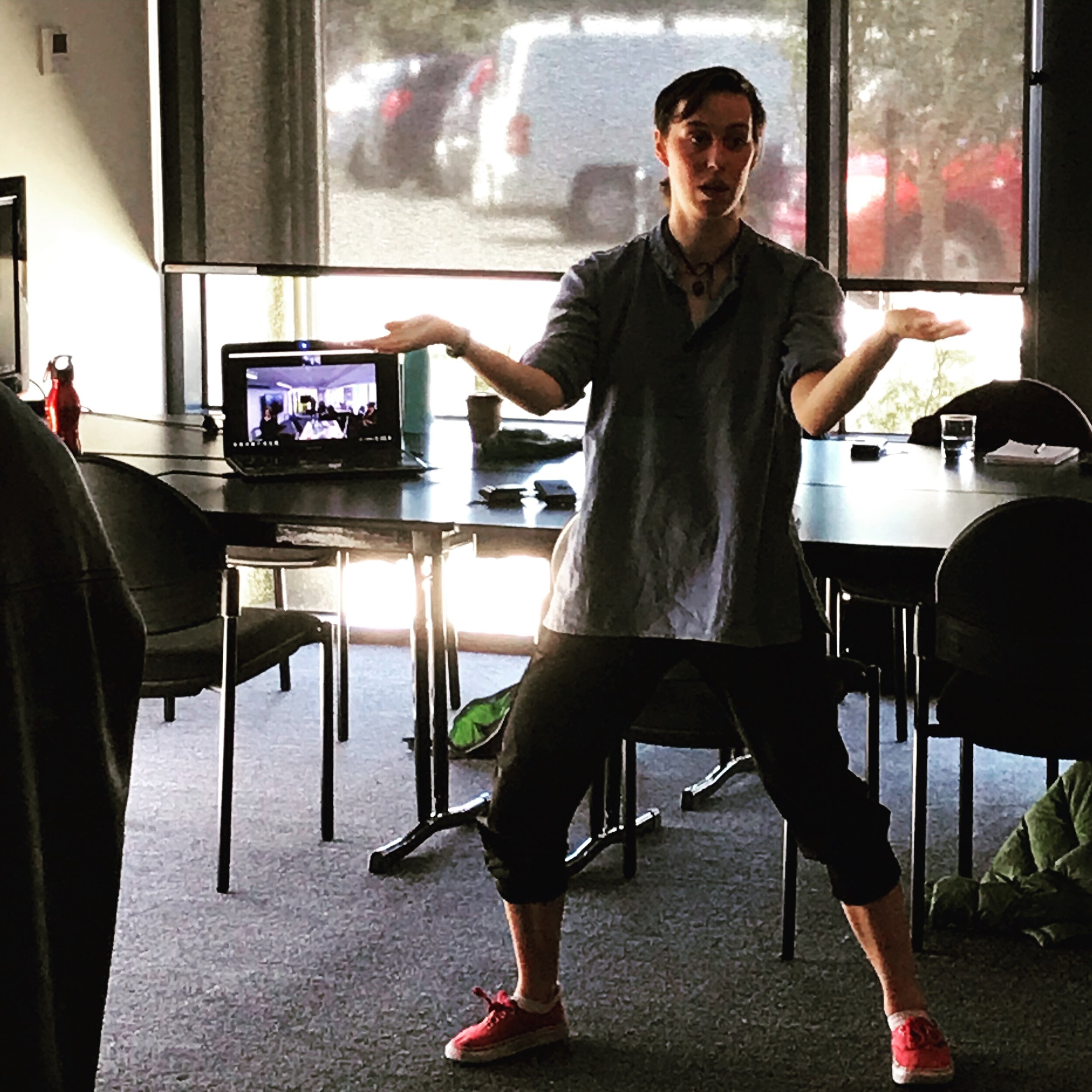
LEARNING EXCHANGE RESOURCE: Valuing Youth Arts
ArTELIER: 31st October led by Kitty and Nathan
This session was held in Windsor Community Precinct Launceston, members of the group who couldn’t make it joined us from the Underwood Centre via zoom. It was themed Valuing youth arts: as a stepping stone and place of experimentation. Empowering young people to speak through theatre and arts to adults. With the question
How do we challenge negative, perceptions surrounding student theatre, youth work, and young people’s art?
Provocateurs: Caitlin Comerford, Artistic Director of Stompin and Jack 11 year-old participants of Stompin Youth
Caitlin introduced us to the core idea at Stompin “that when young people collaborate with professional artists they can create inspiring, bold and relevant new dance works”. She detailed for us how “Stompin involves young people in every aspect of their creative process, from conception to realisation” and how the participants drive the direction of the outcome from the beginning. She explained that the youth involved in Stompin have a relationship more focused on mentorship and an authentic relationship building rather than outcomes. This mentorship exposes the participants to many levels of the performance industry and includes much more than just working on a show. Caitlin also detailed the diverse venues that the company use with each performance being site–specific. The choice of this site is driven by participants and creates a community as it develops which allows the company a wide reach in terms of audience engagement.
Caitlin was joined by 11 year old Jack, our first young provocateur. Jack spoke of being a participant in Stompin Youth and its impact on him. It was powerful to hear how confidently he spoke about the importance of of the relationships and experiences gained from his participation.
http://www.stompin.net/about
Sharing Practice:
Tesnio and boundaries in drama
Bella Young, recently returned from mentorships and work overseas presented on Empowerment in the Arts: tension and boundaries. She spoke candidly about the complexities and her difficulties in youth theatre. She led us in a powerful physical activity, exploring tension and boundaries, which heightened and challenged our awareness of our physicality in the space and our relationships to our colleagues.
Kitty and Nathan presented on their work in the arts with youth though Rising Phoenix giving examples of projects and the impacts on individuals. They also spoke on barriers to engagement and their experience, skills and strategies working with participants experiencing a range of issues such as abuse, literacy, gender, and poverty. http://www.risingphoenixstudios.org/about.html
Kitty and Nathan shared a couple of warm up activities they use and we broke into groups and undertook a drawing activity using a table and dice game to prompt collaborative drawing.
The Long Table discussion
A Long Table discussion in the afternoon allowed for lively debate about the topics discussed in the day and we concluded with a reflective walk at The Gorge.

LEARNING EXCHANGE RESOURCE: Learning on Country
This session was themed How can we decolonise practice? The big issues – Colonisation, Compassion and Climate Change, children and young people
Ruth Langford guided us on this session on Kunanyi / Mt Wellington to learn directly from the ‘most powerful of provocateurs - Country’. Ruth spoke to us about deep listening on country and invited us spend an hour of solo time to be led by country. We spent the afternoon sharing our experiences, listening to our colleagues experience within this hour of learning. This session enabled profound experiences that most in the group speak of as the highlight of all our sessions for the year.
On the mountain…
My personal learning drew me to the disturbed sites on the mountain; the springs hotel site that was destroyed by fire; a tip site for the old hotel with old broken crockery and bottles; the large tract of the power lines; the devastation by the recent storms; the strangely sited Astronomy Societies Listening Station; the fire trails and a large clump of daffodils in start contrast to the indigenous vegetation. Feeling overwhelmed by this walk through area after area of disturbance within the national park I found a protected rocky scree that was covered with incredibly diverse, dense and old mosses. This space felt nurturing and allowed reflection on the disturbed sites. Later when we shared our experiences with the group we found that many of us ended up being drawn to these mossy spaces around the springs. Sinsa Mansell, who describes herself as a ‘proud Pakana woman’, after hearing many of us speak on being drawn to these mossy spaces shared that in indigenous culture Kunanyi is considered feminine and that the mosses are regarded as important female element. She mentioned that the mountain had been a place for birthing. I thought about this for some time afterwards and it led me to reading the book Gathering Moss by the scientist and Indigenous American woman Robin Kimmerer. After much searching Robin found that mosses were used traditionally by women for their absorbancy, for birth, babies and menstruation. This helped me to understand a little of the mountain and idea of mosses as a female element.(Bec Stevens)
In the afternoon we met at UTAS for a Riawunna Lecture by Jimmy Everett-purlia meenamatta titled Learning to Understand “How do Aborigines define themselves in a world dominated by non-Aboriginal cultures and philosophies? Is there a difference and if so what is the difference? Why are cultural awareness programs for white people inadequate in trying to educate them to understand?
Jimmy began by talking about Pat Dodson’s statement that aboriginals are “something else citizens” he spoke strongly about what he understands as the ‘state of exemption’ that aboriginal cultures live within and suggested this in effect is “insidious cultural genocide”and allows the breaking of human rights.
Allowing space to reflect on this confronting introduction Dougie Mansell sang a beautiful song with guitar.
Jimmy spoke a great deal about his understanding of philosophy as ‘thinking about thinking’ and the importance of original philosophy as it relates to indigenous culture, as being inclusive and about dialogue, ceremony and understanding each other’s differences. He spoke in favour of community development and using the cultural arts for change. He reflected on the importance of knowing ourselves, ruminating that questions around identity are often asked to the aboriginal community, provocatively he flipped the question: “If Aborigines were to ask you white people to explain your identity what would your reply be? “
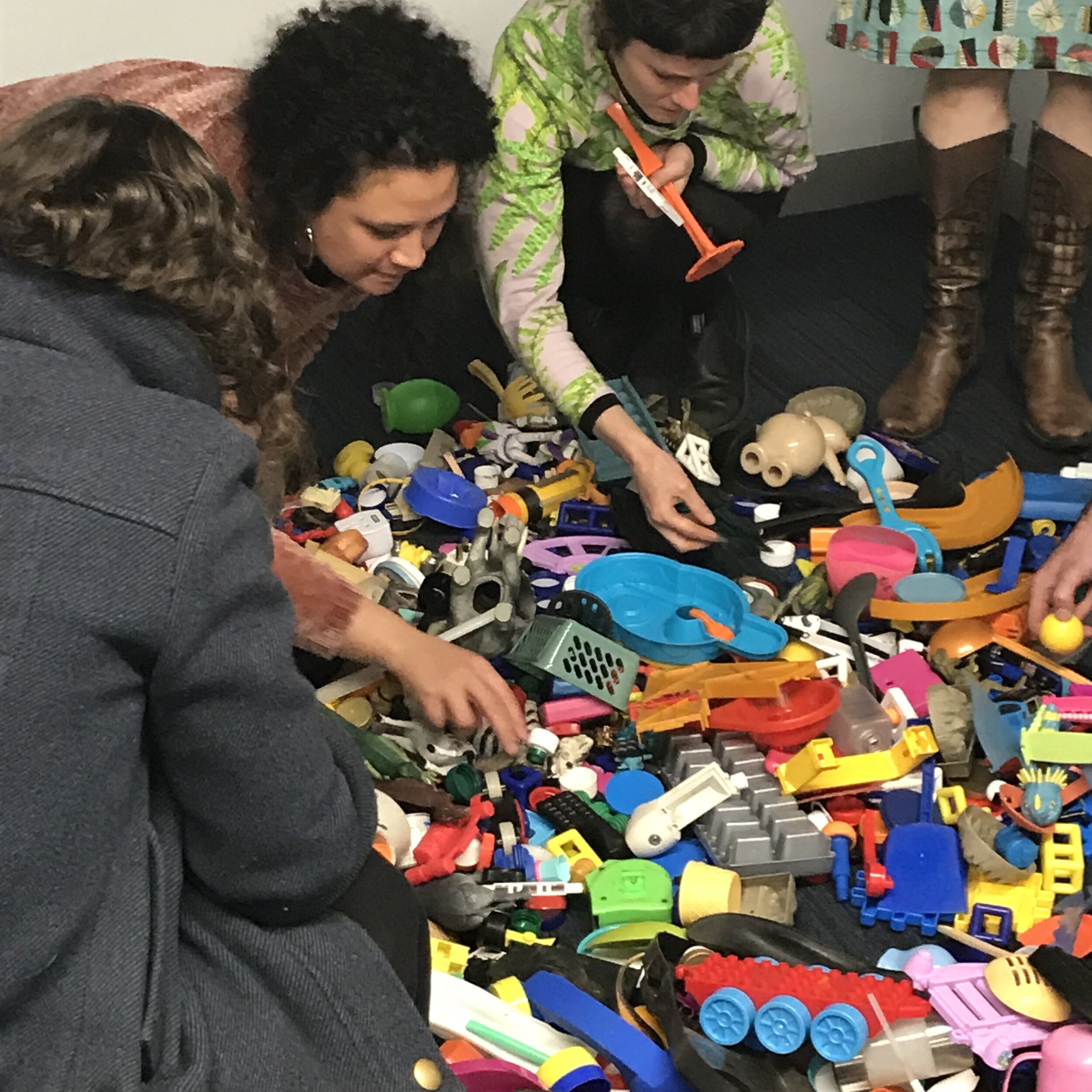
LEARNING EXCHANGE RESOURCE: Building the value of the creative arts in education
ArTELIER: 25th September at The Underwood Centre led by Andy Vagg.
This session was themed Building the value of the creative arts in education, Developing a creative culture within a school environment, that has a focus on creativity, social cohesion, exploring ideas and problem solving. Also: A look at the role of the artist in the residence style of program.
Provocateur: Eric Booth joined us from the USA
Eric Booth calls himself “the oldest living teaching artist” but others call him “the father of the teaching artist profession. “A Teaching Artist is a practicing artist whose teaching is part of that practice. Teaching Artists don't necessarily have education degrees, but they might. Teaching Artists are role models for lifestyle, discipline, and skill. They pass on an oral and experiential tradition in ways of thinking, seeing, and being”
http://ericbooth.net/category/teaching-arts/#
Eric spoke passionately about the importance of the teaching artists and the changing demands on artists over time particularly in terms of shifts post market crash of 2008 in the USA.
He shared his ideas of the prime goals of a teaching artist being:
· To activate the artistry of others
· To have faith in the creative powers of others
· To become guiders
· To shine a light on what others personal relevance is
· To bring out the strengths in each person
· To re-dress the balance of process and product
He ruminated that the teachings artists job is “to find GREAT QUESTIONS – The highest quality questions, remembering that there are no questions with a single answer” and explained in brief his 80% law that “being the fullest, best artist is most important as students observe that and absorb it.”
He spoke much of the value of reflection, “If we do not reflect on our experiences we do not learn from them”
Eric ended by speaking about preparation, that it is of primary importance to demand prep time before work begins and that this is becoming a norm in the USA.
Shared practice:
Tullia Chung Tilley as a teacher and dancer spoke on possible avenues for teaching artists to think about ways of presenting projects to schools that fit the curriculum. She unpacked the school curriculum for us explaining that projects that are integrated with, and help cover the curriculum, are often welcomed. She gave examples of STEAM practice and guided us in a physical activity exploring literacy and movement.
In thinking about youth Tullia posed the question of how do we skill young people for their future? She introduced the acronym VUCA: Volatile, Uncertainty, Complex, Ambiguity and proposed a flip of Velocity, Unorthodoxy, Collaboration, Agility as ways of thinking about developing strategy.
Andy Vagg’s plastic toys
Andy Vagg, experienced local teaching artist spoke to us about the many projects and experiences within schools sharing with us a video made of his experience as artist in residence at Bridgewater High School: https://www.youtube.com/watch?v=DZkTn90W5qA
Andy led us in a simple and profound activity, Plastic Fantastic, that he has refined to its essence over some time to enable multiple and complex activities and learnings to arise within groups.
Andy and Tullia then hosted a Long Table discussion with curly questions about our impact as artists and working within organisations.
Saran Wright at The Long Table
Simon Spain & Victoria Ryle Report from ITAC4 IN NYC where they presented with Leigh Tesch. The conference theme was Artist as Instigator: The Role, Responsibility and Impact of Artists in Global Communities http://www.itac-conference.com/conference/itac4/

LEARNING EXCHANGE RESOURCE: Giving Voice to Young People
Lenine Bourke showing her “Walking Together” project
ArTELIER: 25th July at The Underwood centre led by Simon Spain
This session was themed Giving voice to young people. How can we create expressive modalities that empower children to have a voice in their community as cultural and social citizens? How do we strengthen spatial thinking and placed-based learning?
Provocateur: Lenine Bourke joined us from Brisbane.
Lenine Bourke has a broad range of professional experiences in the arts and cultural sector, nationally and internationally, leading various organisations and projects. Recently awarded with an Australia Council Community Partnerships Fellowship exploring Community Engaged Arts Practices and the intersection with Socially Engaged Arts Practices. http://www.creativeaccomplice.com.au/lenine-bourke/
Lenine shared her knowledge from years of working in community with a focus on “centering children in community learning”. She defined public pedagogy for us as “the art and science of learning outside institutions” and spoke in detail about her experience of working in various institutions in comparison with working in festival and community based projects. Lenine spoke beautifully and profoundly of children as ‘pedagogical enablers’: “through their lack of inhibition, wildness, wonder and capacity to engage with interruptions and affect nature and politics”. Her practice centres around the belief that children care about social justice and that they “have considerable capacity to affect”. Lenine challenged that often in projects it is the adult’s body that has made the work and posed a number of questions: “How do children ride the opportunity you are providing them?” and “what opportunity do you provide children to articulate their experience?”
In thinking about planning for projects she shared a vivid analogy for ‘the journey being the experience rather than the destination,’ telling a story of her of three year old deciding to wear flippers out for the day, thwarting any capacity for an adult desire for achievement but embarking on the perfect outing for adventure and discovery.
Lenine left us with an activity of creating personal archipelago’s – a diagrammatic way of creating a mind map of personal practice. “What are the big and small islands? What are the unnamed islands? Can you see the reef underneath? Is there volcanic activity?”Please see examples.
In question time Simon asked “how do you in-still confidence in funders give the openness of your approach? “
Lenine: “I propose exceptional experience rather than exceptional outcomes”.
Kitty shared that “as a child “skills were gold” in response to Lenine’s approach of not working with a specific skill sets. Lenine offered that if there is something she cannot do she brings in artists with those specific skills.
Lenine finished by reflecting on the value of responsiveness and co-creation and that that diverse communities need diverse artists giving an example of using iPad concierge for the deaf participants to support inclusion in a project.
Shared Practice:
Selena de Carvalho spoke about the logistic of a recent project Climate Conversation and strategies she uses for framing the idea of collaboration with kids before beginning work. She spoke of the importance of finding allies with organisations who understand and can speak for your project when you are not there.
Climate Conversations HobArt is part of the City of Hobart's review of its Climate Change Strategy and looks beyond the formal report format to reflect our community’s climate emotions and sensations. Working with Seed, a sustainability consultancy service whose work combines science, technical and policy development skills; the City saw the opportunity for a wider community conversation based around art. Selena de Carvalho joined the project as an artistic associate to curate a climate art conversation and worked with Lansdowne Crescent Primary School and the community climate forums to capture climate art archived in this site.
https://climateconversationshobart.hotglue.me/
Selena also shared her experience as artist in residence at Claremont College, embedded in the leaning environment. https://www.youtube.com/watch?v=VuzhxrQlQu0
Selena introduced us to the structured conversation practice of The Long Table devised by Louise Weaver. Out of our group of 12, 6 people sat around the table. A question is posed for discussion and only those at the table can speak. Anyone unseated must listen and if they have something to add can tap a seated person on the shoulder and the sit in to speak. This creates a dynamic space, one for listening and sharing. We carried this format to our following sessions.
You can download Victoria’s documentation of the day here…

LEARNING EXCHANGE RESOURCE: What do we mean by participation and engagement?
This session sought to identify key themes.
Our first session where we met our fellow ArTELIER colleagues was held at two locations, All That We Are at Pipe Clay Lagoon followed by an afternoon session at the Underwood Centre, as an introduction to our partnership with them.
This session was framed by the question What do we mean by participation & engagement?
Ruth Langford delivered a welcome to country and spoke on Deep Listening as the listening to all living things without overlaying judgement or reaction. She invited us to pair with another to introduce ourselves and practice deep listening - the perfect way to begin an artist led community of inquiry.
Provocateurs: Madeleine And Tim Humphrey
“Madeleine and Tim are artists who create unexpected situations for listening. They have a long-term collaborative practice. Their work is driven by a curiosity for questioning and listening in human culture and seeks to evolve and engage with new processes and audiences through public and private interventions. Their practice intertwines local, national and international relationships”.
http://madeleineandtim.net/practice/
Madelein and Tim’s talk focused on creating works within festival contexts showing us a number of their poetic and beautifully resolved pieces, such as the Megaphone Project, that draw viewers into a exploratory process of discovery with sound. They spoke of creating platforms for engagement, encouraging risk taking and the ‘disappearing ego’. In responding to festival requests for their works they spoke about doing a combination works that allow them to cater for mass audience interaction as well also creating as intimate small-scale works. They reflected that the smaller scale works are often well suited to kids and suggested ways to pitch these kinds of works to festivals. Time was given after this presentation for questions and reflection.
Following this a key aim for the day was to co-create the themes for the monthly discussions for the year. In the week before the session we all emailed in a question that is pivotal to our practice, during this session we brainstormed and grouped these to form a yearly agenda for ArTELIER.
At the Underwood centre in the afternoon we were introduced to the staff and facility. Simon Spain ran a hands-on workshop, Self Assembly, in which we paired up to created a figure out of plaster bandage and branches. Working collaboratively is essential to making these figures and to forming them into a group that are inter-dependent, relying on each other to stand. The activity becomes an embodied metaphor for collaboration.




